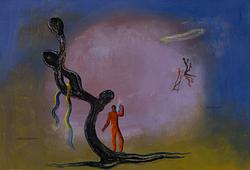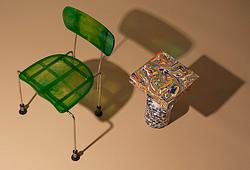KRUKA med LOCK, porslin. Qingdynastin, Kangxi (1662-1722).
Ovoid form, dekor i famille vertefärger av magnolia, pioner och äppelträd som växer från skulpturala Taihu klippformationer, glaserad botten. Höjd med lock 24 cm.
Locket lagat.
Proveniens
The Avalon Collection.
This collection, which in the main focuses on the Interregnum and Kangxi periods has been both carefully and sensitively formed over the last twenty-five years. The collector, a member of the English Oriental Ceramic Society, has assembled the collection with an eye for provenance whilst purchasing from old European collections, well-established antique dealers and at auction.
Academically, the pieces have been well researched both in terms of their symbolism and narrative themes. In many instances the imagery on the pieces has been referenced to episodes in the romantic and historic novels of Chinese mythology, which were used extensively in the decoration of seventeenth century Chinese porcelain.
Litteratur
As the decoration of the jar unfolds the pictorial quality – displaying delicate shades and graduations of the famille verte palette – is increased with the addition of a variety of birds and insects. Here the theme of “Flowers and Birds”- popular in Chinese painting since the Song dynasty – achieves a very high decorative quality.
Övrig information
The decorative combination of peonies, magnolia and crab apple blossom is not only applied because of its beauty but together they also convey a promise of happiness in the form of a rebus – phonetically identical with the meaning in Chinese for “Wealth and high rank in the Jade Hall”.
This shape of jar is commonly referred to in the West as a ginger jar - the name being derived from the Dutch word “confijt pot”, a pot for preserves, which was found on the freight lists of Dutch ships from about 1635. Vessels of this type seem to have been particularly popular in Holland because they are depicted in numerous still life paintings of the 17th century.














































